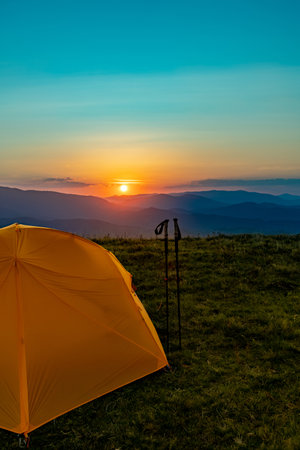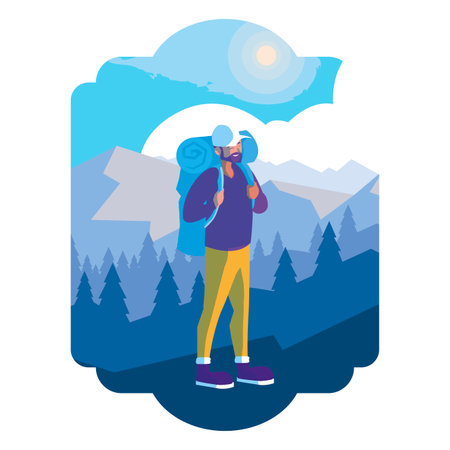1. Understanding Regional Weather Patterns
When youre camping in the U.S., the weather can vary wildly depending on where you are. From scorching desert heat to sudden mountain snowstorms, understanding regional weather is key to staying safe and comfortable outdoors. Here’s a breakdown of what to expect and how to prepare for it.
Know Your Region
The U.S. covers a massive range of climates. Knowing the typical weather conditions of your camping destination helps you plan ahead. Heres a quick overview:
| Region | Typical Climate | Weather Risks |
|---|---|---|
| Southwest (e.g., Arizona, Nevada) | Hot, dry, with cool nights | Heatstroke, dehydration, flash floods in monsoon season |
| Southeast (e.g., Florida, Georgia) | Hot and humid, frequent rain | Tropical storms, lightning, bugs (mosquitoes!) |
| Northeast (e.g., New York, Maine) | Mild summers, cold winters | Sudden rainstorms, hypothermia in colder months |
| Midwest (e.g., Illinois, Kansas) | Diverse – hot summers, cold winters | Tornadoes, thunderstorms, unpredictable weather changes |
| Pacific Northwest (e.g., Washington, Oregon) | Mild temps, lots of rain | Mudslides, wet gear issues, limited sun exposure |
| Mountain Regions (e.g., Colorado Rockies) | Crisp air, sudden temperature drops | Snow even in summer, altitude sickness, lightning at high elevations |
| Northern Plains (e.g., North Dakota) | Certain seasons can be bitterly cold or blazing hot | Icy winds, blizzards in winter; heatwaves in summer |
Tune Into Local Forecasts Before and During Your Trip
A few days before you head out on your trip — and each day while youre camping — check the local weather forecast using reliable sources like NOAA.gov or the Weather Channel app. Sudden changes in weather can happen fast in areas like the Midwest or Mountain West.
Your Go-To Weather Prep Checklist:
- Packed layers? Weather can shift quickly — especially in higher altitudes.
- Shelter ready? Your tent should be waterproof and rated for the expected temperatures.
- Easily accessible gear? Rain jackets, thermal wear, or sun protection should be within reach.
- An emergency plan? Know where the closest ranger station or town is located.
A Quick Tip:
If youre heading into a region known for sudden storms — like the Midwest during tornado season — always scout out shelter options nearby and carry a portable weather radio.
The more you understand about the climate where you’re camping, the better prepared youll be to handle anything Mother Nature throws your way.
2. Gear Essentials for Extreme Conditions
When youre camping in the U.S., weather can change fast—one minute its sunny, the next youre caught in a downpour or sudden drop in temperature. Having the right gear is key to staying safe and comfortable no matter what Mother Nature throws your way. Heres what you need to pack for different types of extreme weather:
Heatwaves
Camping during a heatwave can be dangerous without proper gear to keep you cool and hydrated.
| Item | Purpose |
|---|---|
| Lightweight, UV-protective clothing | Shields skin from sun while allowing airflow |
| Wide-brimmed hat & sunglasses | Protects face and eyes from direct sunlight |
| Cooling towels or neck wraps | Lowers body temperature when soaked with water |
| Portable battery-powered fan | Adds airflow inside your tent or around your campsite |
| Hydration packs or insulated water bottles | Keeps water cool and accessible all day long |
Torrential Rain
A heavy rainstorm can quickly turn your outdoor adventure into a soggy mess if youre not prepared.
| Item | Purpose |
|---|---|
| Waterproof tent with full rainfly | Keeps you dry and protected during downpours |
| Tarp or groundsheet | Adds an extra layer of protection under your tent |
| Poncho or rain jacket & pants (breathable) | Keeps you dry while hiking or moving around camp |
| Dry bags or waterproof containers | Keeps clothes, electronics, and food dry |
Snowstorms & Freezing Temps
If youre winter camping, keeping warm is your top priority. The right gear can make all the difference.
| Item | Purpose |
|---|---|
| 4-season tent with strong poles and snow flaps | Built to withstand heavy snow and wind |
| Synthetic or down sleeping bag rated for low temps | Keeps you warm through the night |
| Insulated sleeping pad (closed-cell foam + air) | Adds warmth by preventing heat loss to the ground |
| Mittens, thermal base layers, insulated boots | Keeps extremities warm in freezing weather |
High Winds
Campsites exposed to strong gusts need sturdy gear to stay safe and secure.
| Item | Purpose | |||||||||||||||||||||||||||||||||||||||||||||||||||
|---|---|---|---|---|---|---|---|---|---|---|---|---|---|---|---|---|---|---|---|---|---|---|---|---|---|---|---|---|---|---|---|---|---|---|---|---|---|---|---|---|---|---|---|---|---|---|---|---|---|---|---|---|
| Dome-style tent with low profile and strong guylines | Easier to anchor and more resistant to tipping over in wind | |||||||||||||||||||||||||||||||||||||||||||||||||||
| Anodized aluminum tent stakes (Y-shaped) | Bite deeper into soil for better holding power than standard stakes | |||||||||||||||||||||||||||||||||||||||||||||||||||
| Tent repair kit with extra poles and duct tape | Covers quick fixes if gear gets damaged mid-trip | |||||||||||||||||||||||||||||||||||||||||||||||||||
| Windbreak tarp or natural barriers like rocks/trees (if available) | Helps reduce direct wind exposure at your campsite < / tr >< / tbody >< / table >
Quick Tip:Always check the forecast before heading out, but even then, pack as if conditions could change fast. Being ready means fewer surprises—and more fun outdoors!
3. Setting Up a Safe and Weather-Resistant CampsiteWhen youre camping in the U.S., especially in areas known for unpredictable or extreme weather—like the Rockies, the Southwest deserts, or coastal regions—where you pitch your tent can make all the difference. Here are some practical tips to help you set up a campsite that can stand up to whatever Mother Nature throws your way. 🏕️ Tips for Choosing the Best CampsiteThe first step to surviving extreme weather is picking the right spot to camp. Avoid low-lying areas that could flood during rainstorms, and steer clear of hilltops where wind exposure is highest.
⛺ Anchoring Your Tent ProperlyYour tent is your first line of defense against the elements. Make sure its secured correctly so it doesn’t collapse or blow away when weather conditions change fast. Follow These Anchoring Tips:
🪨 Using Natural Barriers to Your AdvantageNaturally occurring features like boulders, dense shrubbery, and hills can provide excellent protection if used smartly. How to Use Natural Features:
Selecting a solid campsite and setting up properly is key to staying safe during severe weather conditions. With these strategies, youll be more prepared for whatever nature brings during your U.S. camping adventure. 4. Emergency Preparedness and Staying InformedWhen youre out camping in the U.S., especially in areas known for unpredictable or extreme weather, being prepared for emergencies is a must. Whether its sudden thunderstorms, wildfires, or flash floods, having a plan and the right tools can make all the difference. Heres how to stay informed and ready for whatever nature throws your way. Create a Basic Emergency KitYour emergency kit should be compact, easy to carry, and stocked with essentials that can keep you safe for at least 72 hours. Heres a simple guide:
Use NOAA Weather RadiosThe National Oceanic and Atmospheric Administration (NOAA) broadcasts continuous weather information nationwide. A portable NOAA weather radio can give you crucial updates about storms, flash floods, heatwaves, and wildfires—even when youre off-grid. Look for one with SAME (Specific Area Message Encoding) technology so you get alerts specific to your camping region. Tips for Using Your NOAA Radio:
Reacting Quickly to Changing ConditionsNature doesn’t always give much warning. That’s why staying alert and knowing how to respond is just as important as packing gear. If There’s a Wildfire Nearby:
If Flash Flooding is Forecasted:
Stay Connected When PossibleIf youre camping in an area with any cell signal, consider downloading apps like FEMA Mobile App or Red Cross Emergency App. These can provide weather alerts, shelter locations, and safety tips right on your phone. Just remember: don’t rely solely on tech—always have backup plans like maps and radios in case devices fail. The key to surviving extreme weather while camping is preparation and awareness. With a reliable emergency kit, a working NOAA radio, and a solid understanding of how to respond quickly to threats like wildfires and flash floods, youll be well-equipped to handle unexpected challenges on your outdoor adventure. 5. Health and Safety Tips in Harsh EnvironmentsWhen camping in extreme weather across the U.S., your health and safety should always come first. Whether youre facing a heatwave in the Southwest or freezing temperatures in the Rockies, knowing how to take care of your body is key to surviving and enjoying your adventure. Stay Hydrated During HeatwavesHigh temperatures can lead to dehydration quickly, especially if youre hiking or setting up camp under the sun. Always carry plenty of water and drink regularly—even if you don’t feel thirsty. Dehydration can sneak up on you, causing fatigue, dizziness, or even heat stroke. Tips for Staying Hydrated:
Avoid Hypothermia in Cold WeatherIn cold environments like mountainous regions or northern states, hypothermia is a real threat. It happens when your body loses heat faster than it can produce it. Wearing layers, staying dry, and eating enough calories are crucial steps to stay warm and safe. Signs of Hypothermia:
Quick Prevention Tips:
Recognize Weather-Related Illnesses EarlyCertain illnesses caused by extreme weather can become dangerous if not treated right away. Learning the symptoms helps you take action before things get serious—for yourself or fellow campers. Common Weather-Related Illnesses:
Your best defense against harsh environments is preparation and awareness. Pay attention to how your body feels and look out for others around you—staying safe means everyone gets to enjoy the trip. |


